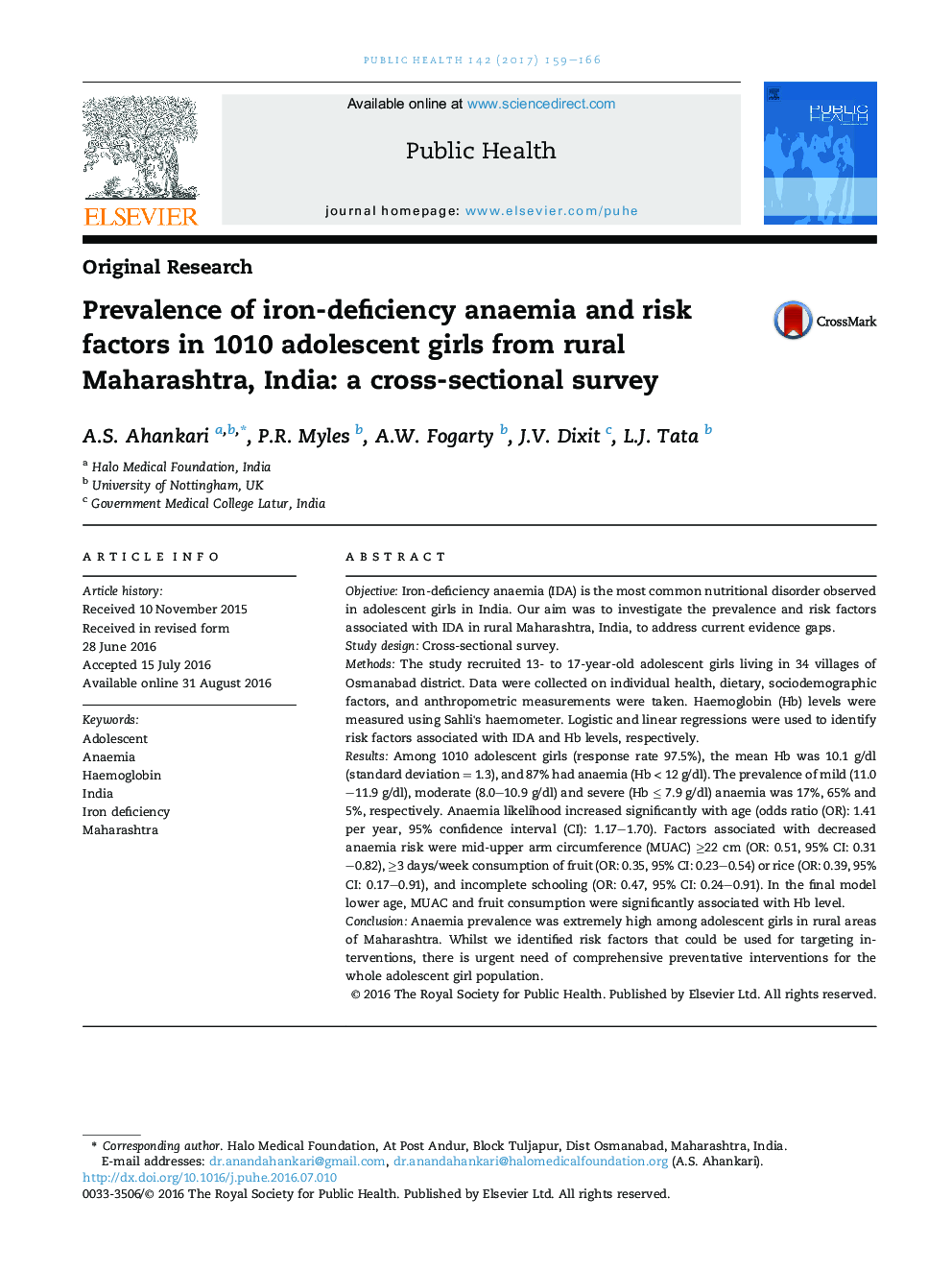| کد مقاله | کد نشریه | سال انتشار | مقاله انگلیسی | نسخه تمام متن |
|---|---|---|---|---|
| 5122770 | 1487201 | 2017 | 8 صفحه PDF | دانلود رایگان |
- This cross-sectional survey from rural areas of Maharashtra state of India reported a very high prevalence of anaemia (87%) in adolescent girls.
- Increase in age, low mid-upper arm circumference and low fruit intake showed highest risk of being diagnosed with anaemia.
- There is an urgent need to evaluate current anaemia control strategies in rural areas of the state.
ObjectiveIron-deficiency anaemia (IDA) is the most common nutritional disorder observed in adolescent girls in India. Our aim was to investigate the prevalence and risk factors associated with IDA in rural Maharashtra, India, to address current evidence gaps.Study designCross-sectional survey.MethodsThe study recruited 13- to 17-year-old adolescent girls living in 34 villages of Osmanabad district. Data were collected on individual health, dietary, sociodemographic factors, and anthropometric measurements were taken. Haemoglobin (Hb) levels were measured using Sahli's haemometer. Logistic and linear regressions were used to identify risk factors associated with IDA and Hb levels, respectively.ResultsAmong 1010 adolescent girls (response rate 97.5%), the mean Hb was 10.1 g/dl (standard deviation = 1.3), and 87% had anaemia (Hb < 12 g/dl). The prevalence of mild (11.0-11.9 g/dl), moderate (8.0-10.9 g/dl) and severe (Hb â¤Â 7.9 g/dl) anaemia was 17%, 65% and 5%, respectively. Anaemia likelihood increased significantly with age (odds ratio (OR): 1.41 per year, 95% confidence interval (CI): 1.17-1.70). Factors associated with decreased anaemia risk were mid-upper arm circumference (MUAC) â¥22 cm (OR: 0.51, 95% CI: 0.31-0.82), â¥3 days/week consumption of fruit (OR: 0.35, 95% CI: 0.23-0.54) or rice (OR: 0.39, 95% CI: 0.17-0.91), and incomplete schooling (OR: 0.47, 95% CI: 0.24-0.91). In the final model lower age, MUAC and fruit consumption were significantly associated with Hb level.ConclusionAnaemia prevalence was extremely high among adolescent girls in rural areas of Maharashtra. Whilst we identified risk factors that could be used for targeting interventions, there is urgent need of comprehensive preventative interventions for the whole adolescent girl population.
Journal: Public Health - Volume 142, January 2017, Pages 159-166
